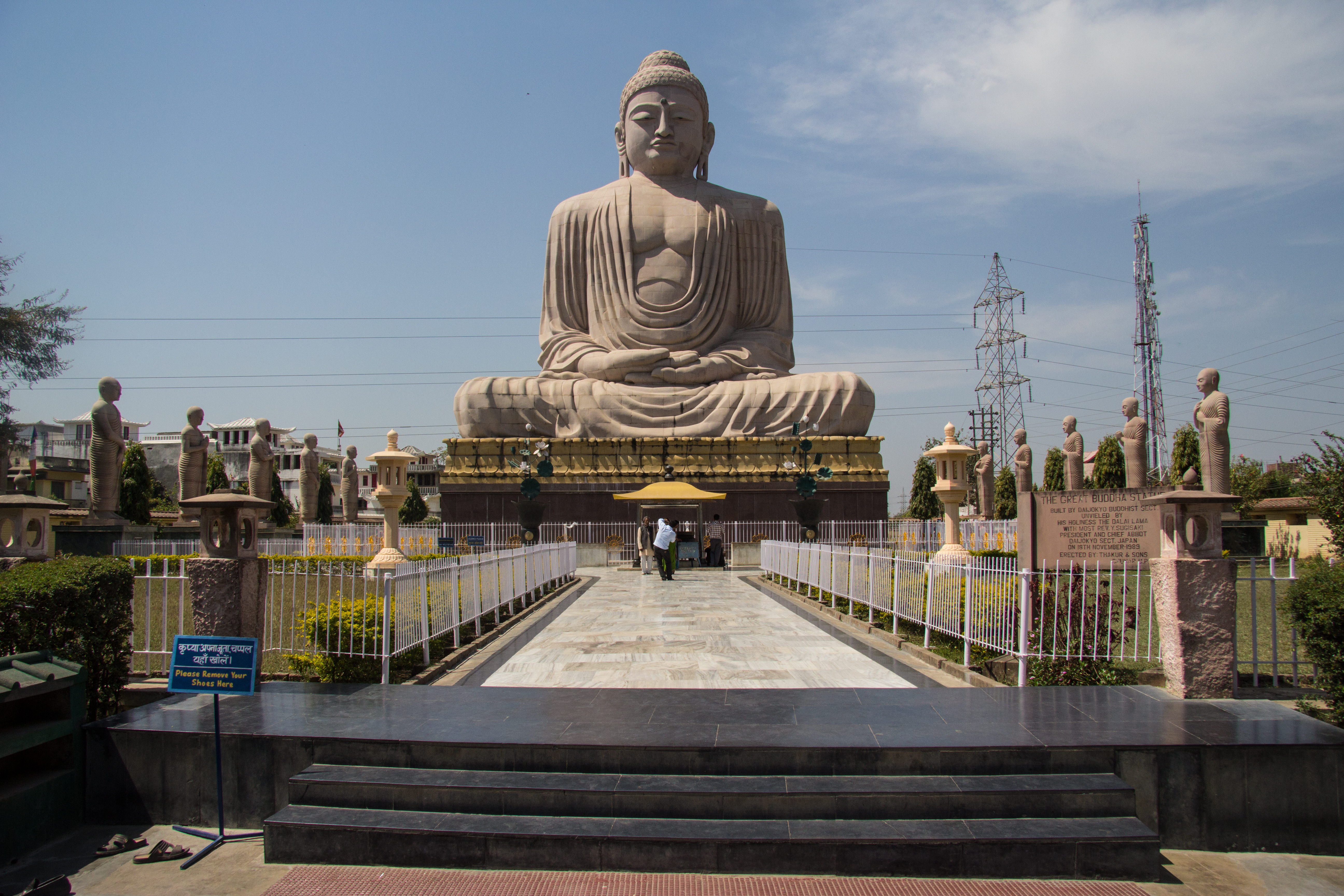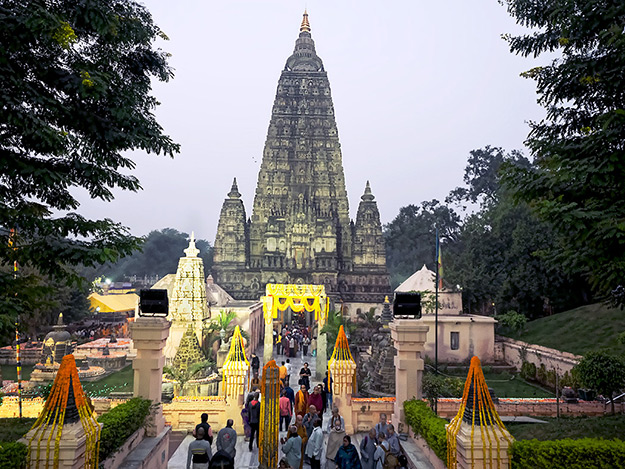Gaya is a city steeped in history and spirituality. This ancient city in India is a significant pilgrimage site.
Nestled in the state of Bihar, Gaya attracts thousands of visitors each year. Pilgrims and tourists alike come to explore its sacred sites and historical landmarks. The city’s rich cultural heritage makes it a fascinating destination. From the revered Bodh Gaya, where Buddha attained enlightenment, to the ancient Vishnupad Temple, Gaya offers a glimpse into India’s spiritual tapestry.
Its bustling markets, delicious cuisine, and friendly locals add to the charm. As you dive into the wonders of Gaya, prepare to be captivated by its profound significance and vibrant culture. Let’s embark on this journey to discover what makes Gaya so special.

Credit: www.youtube.com
Historical Roots
Gaya, a city in the Indian state of Bihar, is steeped in history and culture. Its roots go deep, showcasing a rich tapestry of historical events and influences that have shaped its identity. Let’s delve into the historical roots of Gaya to understand its origins and the influence of various dynasties over time.
Origins
Gaya’s origins are closely linked to ancient Hindu mythology and history. It is believed that the city is named after the demon Gayasura, whose body is said to have transformed into the hills surrounding the city. This mythological tale is not just a story but a part of the cultural fabric that attracts pilgrims and history enthusiasts alike.
During a visit to Gaya, you might find yourself standing by the sacred Falgu River, where countless rituals and ceremonies have been performed for centuries. Imagine the countless generations that have come here, each leaving a mark on this ancient land.
Have you ever considered how the stories of a place shape its identity and draw people from around the world? Gaya’s origins are a perfect example of this phenomenon, where mythology and history intertwine to create a city that is both spiritual and historical.
Influence Of Dynasties
Gaya has seen the rise and fall of several dynasties, each leaving its own unique imprint on the city. The Maurya and Gupta Empires were particularly influential in shaping the region’s cultural and political landscape.
Under the Maurya dynasty, Gaya flourished as a center of learning and spirituality. Emperor Ashoka, one of the most famous Mauryan rulers, is known to have contributed to the spread of Buddhism, and Gaya played a significant role in this religious movement. It’s fascinating to think about how the policies of a single ruler can resonate through centuries.
During the Gupta period, Gaya continued to thrive, becoming a hub of education and culture. The remnants of ancient universities and temples from this era still attract scholars and tourists, eager to glimpse the past. Ever wondered how a city retains its cultural significance through the ages? Gaya’s enduring appeal lies in its ability to preserve and honor its historical legacy.
As you walk through the streets of Gaya, you can almost hear the whispers of the past, telling stories of dynasties and empires that once ruled this land. Each monument and relic is a testament to the rich history that makes Gaya a fascinating destination for history buffs and spiritual seekers alike.
Exploring Gaya’s historical roots offers a unique perspective on how the past shapes the present. What stories will you uncover on your journey through this ancient city?
Significance In Hinduism
Gaya holds a significant place in Hinduism. This ancient city in Bihar, India, is revered by Hindus worldwide. It is closely associated with religious rituals and sacred sites.
Sacred Sites
Gaya is home to many sacred sites. One of the most important is the Vishnupad Temple. This temple is believed to contain a footprint of Lord Vishnu. Devotees flock here to worship and seek blessings.
Another key site is the Mangla Gauri Temple. This temple is one of the Shakti Peethas. It is dedicated to Goddess Sati. Pilgrims visit to offer prayers and perform rituals.
Pilgrimage Traditions
Pilgrims visit Gaya for the Pind Daan ritual. This ritual is performed for the peace of departed souls. It is believed to offer salvation to ancestors.
During the Pitripaksha Mela, thousands of devotees gather in Gaya. They perform rituals on the banks of the Falgu River. This is a major event in the Hindu calendar.
Gaya’s importance in Hinduism cannot be overstated. It continues to be a central pilgrimage site. Devotees from all over the world come to seek spiritual solace.
Buddhist Connections
Gaya holds deep spiritual significance in Buddhist Connections. This ancient city attracts pilgrims from all over the world.
### Buddhist Connections Gaya, a city in the Indian state of Bihar, is a treasure trove of Buddhist history and spirituality. This city is deeply intertwined with the life of Buddha and attracts pilgrims from around the world. Gaya’s spiritual significance is immense, and it offers a unique journey through Buddhist heritage.Bodh Gaya
Bodh Gaya is the most revered site for Buddhists globally. Located just 12 kilometers from Gaya, it is here that Prince Siddhartha attained enlightenment and became Buddha. Walking through Bodh Gaya, you can feel a profound sense of peace and spirituality. One of the must-visit places in Bodh Gaya is the Mahabodhi Temple. This UNESCO World Heritage site marks the exact spot where Buddha achieved enlightenment. You can sit under the sacred Bodhi Tree, meditate, and feel the same tranquility that Buddha might have felt centuries ago. The temple complex is not just about the past; it is very much alive today. You’ll see monks chanting, devotees offering prayers, and visitors from all over the world. It’s a vibrant place that connects you to the teachings of Buddha in a very personal way.The Enlightenment Of Buddha
Imagine sitting under a tree and finding the ultimate truth about life. That’s exactly what happened to Siddhartha Gautama in Bodh Gaya. He meditated under the Bodhi Tree for 49 days before reaching enlightenment. This event is the cornerstone of Buddhism, and Bodh Gaya is the heart of it. You might wonder, what does it feel like to visit such a place? The air is filled with chants and the scent of incense. Pilgrims walk barefoot around the temple, their faces showing devotion and peace. It’s an experience that makes you reflect on your own life and spirituality. Have you ever considered what enlightenment means to you? Visiting Bodh Gaya can be a transformative experience. It encourages you to think about your own journey, your struggles, and your moments of clarity. It’s not just about observing; it’s about participating in a tradition that has inspired millions. In Bodh Gaya, you can also explore the Great Buddha Statue, towering at 80 feet. It’s not just a statue; it’s a symbol of peace and enlightenment that invites you to pause and reflect. Whether you are a Buddhist or someone seeking spiritual growth, the lessons from Buddha’s enlightenment are timeless and universal. How can you apply these lessons in your daily life? Perhaps by practicing mindfulness, showing compassion, or simply taking a moment to breathe and reflect. Gaya, with its rich Buddhist connections, offers more than just historical insights. It provides a space for personal growth and spiritual awakening. Wouldn’t you want to experience that?Architectural Marvels
Gaya, a city steeped in history, is a paradise for architecture enthusiasts. The architectural marvels here are not just about bricks and stones; they tell tales of devotion, culture, and ancient engineering prowess. As you walk through its lanes, each structure offers a unique glimpse into the past, making Gaya a treasure trove for history buffs.
Ancient Temples
Gaya is home to some of the most magnificent ancient temples. The Mahabodhi Temple, a UNESCO World Heritage site, stands out with its grandeur. As you enter, the serene ambiance and intricate carvings leave you in awe. The temple’s towering spire, adorned with golden finial, gleams under the sun, making it a sight to behold.
An unexpected gem is the Vishnupad Temple. Dedicated to Lord Vishnu, the temple is famous for the 40 cm long footprint of Lord Vishnu in a basalt rock. The architecture here is distinct, with its octagonal shrine and beautiful shikhara (spire) that attracts pilgrims and tourists alike.
Unique Structures
Beyond temples, Gaya surprises you with unique structures that speak volumes about its architectural diversity. The Barabar Caves, the oldest surviving rock-cut caves in India, offer a fascinating glimpse into the ancient art of carving. The polished interiors and echo effect inside the caves are simply mesmerizing.
Another intriguing structure is the Animesh Lochan Chaitya. It is said that Buddha meditated here for seven days without blinking his eyes. The simplicity of the structure, combined with its historical significance, makes it a place worth visiting.
Have you ever wondered how these architectural marvels have stood the test of time? Perhaps it’s the blend of spirituality and engineering. Next time you visit Gaya, take a moment to marvel at these structures. They are not just buildings; they are silent storytellers of an era gone by.
Cultural Heritage
Gaya is a treasure trove of cultural heritage. This ancient city in Bihar, India, boasts a rich history and vibrant traditions. Its cultural landscape is diverse and deeply rooted in spiritual practices. Visitors can immerse themselves in its unique blend of local festivals and traditional customs.
Local Festivals
Gaya hosts many local festivals that showcase its cultural vibrancy. Chhath Puja is one of the most significant festivals. It involves worshiping the sun god and takes place on the banks of rivers. Devotees offer prayers and fast for several days. During this time, the city comes alive with lights, music, and colorful decorations.
Pitru Paksha is another important festival in Gaya. It honors the ancestors and involves offering food and prayers. Thousands of pilgrims visit the city to perform rituals at the sacred Vishnupad Temple. The atmosphere during these festivals is electric and full of devotion.
Traditional Practices
Traditional practices in Gaya are deeply rooted in spirituality. The city is known for its unique rituals and customs. One such practice is the Pind Daan, a ritual to honor deceased ancestors. This ritual is believed to bring peace to the souls of the departed.
Gaya is also famous for its traditional folk dances and music. The local communities perform these arts during festivals and special occasions. These performances often tell stories of the region’s history and legends. They are a vital part of Gaya’s cultural identity and heritage.
Modern-day Gaya
Modern-Day Gaya is a blend of ancient heritage and modern advancement. This city in Bihar, India, has grown while preserving its historical charm. It attracts pilgrims and tourists from all over the world. Let’s explore Gaya’s urban development and the impact of tourism on this vibrant city.
Urban Development
Gaya’s urban development has transformed the city’s landscape. New roads and infrastructure make travel easier. Modern buildings stand alongside ancient temples. The city has improved public services like water supply and waste management. Educational institutions and healthcare facilities have also grown. These changes provide better living standards for residents.
Gaya’s transportation network has seen significant upgrades. Improved rail and bus services connect the city to other parts of India. New residential projects offer better housing options. Shopping centers and markets cater to the needs of modern consumers. These developments have made Gaya a more livable city.
Tourism Impact
Tourism plays a vital role in Gaya’s economy. Pilgrims visit the city to see the Mahabodhi Temple. This UNESCO World Heritage site draws visitors from around the world. The influx of tourists boosts local businesses. Hotels, restaurants, and shops thrive due to tourism.
Tourism also promotes cultural exchange. Visitors learn about Gaya’s rich history and traditions. Local artisans and craftsmen benefit from increased demand for their products. The tourism sector creates jobs and supports the local economy. This helps improve the quality of life for many residents.
Spiritual Experiences
Gaya, a city steeped in history, is a treasure trove of spiritual experiences. It is a place where the soul finds peace and the mind finds clarity. Here, you can immerse yourself in ancient practices that rejuvenate the spirit and heal the body.
Meditation Retreats
Gaya offers many meditation retreats that cater to beginners and experts alike. These retreats provide serene environments perfect for deep reflection. You can join guided sessions that help you focus and center your thoughts. The tranquil surroundings enhance your meditation experience. Each retreat emphasizes the importance of mindfulness. Participants often leave with a renewed sense of inner peace.
Healing Practices
Healing practices in Gaya draw from ancient wisdom. Traditional healers use natural methods to restore balance. You can experience Ayurveda, which involves herbal treatments and massages. Reiki, another popular practice, uses energy to heal the body and mind. These practices aim to harmonize your physical and spiritual well-being. Many visitors find these healing practices transformative and calming.

Credit: en.wikipedia.org
Natural Beauty
Gaya, a city in Bihar, India, is known for its natural beauty. The serene landscapes and the tranquil River Phalgu offer a peaceful escape. Nature lovers will find solace in Gaya’s lush surroundings and scenic views.
River Phalgu
The River Phalgu flows gently through Gaya. It is a sacred river for many. The banks of the river provide a serene atmosphere. Visitors often come to the river for its peaceful vibes. The clear waters reflect the sky, creating a picturesque view.
Scenic Landscapes
Gaya is home to many scenic landscapes. Rolling hills and green fields stretch as far as the eye can see. The countryside offers a tranquil retreat from the city’s bustle. Nature trails invite explorers to discover hidden gems. The landscapes change with the seasons, each offering unique beauty.

Credit: holeinthedonut.com
Frequently Asked Questions
What Is Gaya Famous For?
Gaya is famous for the Mahabodhi Temple, where Buddha attained enlightenment. It’s a significant pilgrimage site for Buddhists.
What Is The Meaning Of Gaya?
Gaya is a city in Bihar, India. It holds religious significance for Hindus and Buddhists.
Which God Is Located In Gaya?
Lord Vishnu is the primary deity in Gaya. The city is famous for the Vishnupad Temple dedicated to him.
What Does Gaya Mean In Korean?
Gaya in Korean refers to an ancient confederacy of small states in the southern part of the Korean Peninsula.
Conclusion
Gaya offers rich culture and history for all visitors. Explore ancient temples and vibrant markets. Enjoy local cuisine, full of unique flavors. Appreciate the serene landscapes and spiritual atmosphere. Gaya provides unforgettable experiences and cherished memories. Plan your visit soon and dive into the wonders of Gaya.
Discover the charm and beauty waiting for you.
{ “@context”: “https://schema.org”, “@type”: “FAQPage”, “mainEntity”: [ { “@type”: “Question”, “name”: “What is Gaya famous for?”, “acceptedAnswer”: { “@type”: “Answer”, “text”: “Gaya is famous for the Mahabodhi Temple, where Buddha attained enlightenment. It’s a significant pilgrimage site for Buddhists.” } } , { “@type”: “Question”, “name”: “What is the meaning of Gaya?”, “acceptedAnswer”: { “@type”: “Answer”, “text”: “Gaya is a city in Bihar, India. It holds religious significance for Hindus and Buddhists.” } } , { “@type”: “Question”, “name”: “Which god is located in Gaya?”, “acceptedAnswer”: { “@type”: “Answer”, “text”: “Lord Vishnu is the primary deity in Gaya. The city is famous for the Vishnupad Temple dedicated to him.” } } , { “@type”: “Question”, “name”: “What does Gaya mean in Korean?”, “acceptedAnswer”: { “@type”: “Answer”, “text”: “Gaya in Korean refers to an ancient confederacy of small states in the southern part of the Korean Peninsula.” } } ] }



